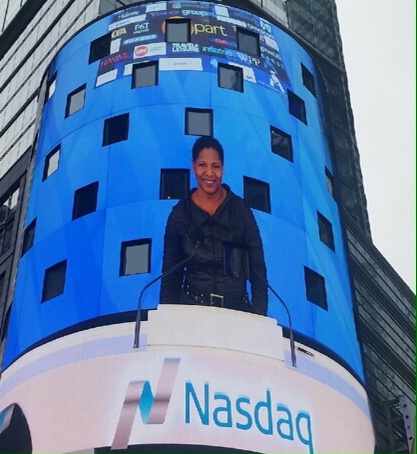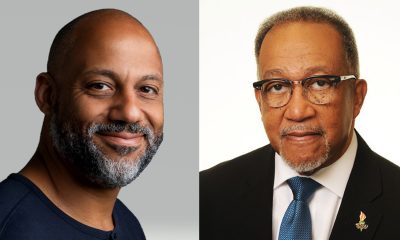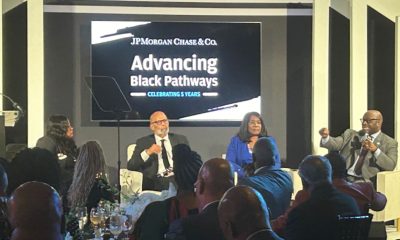Op-Ed
Diversity in the Age of ‘Total Market’ Advertising

By Valerie Graves
NNPA Columnist
As I joined fellow advocates of advertising diversity in ringing the opening bell at the NASDAQ exchange recently, I couldn’t help thinking that our industry, a trendsetter in so many areas, is bringing up the rear when it comes to diversity.
Sure, there are terrific initiatives such as I’mPART (to Promote, Attract, Retain and Train diverse employees in advertising) from The Advertising Club of New York, and the industry coalition, ADCOLOR, have made valuable strides by providing support to educational diversity programs and creating a vibrant community where advertising and marketing communications professionals of color can see others like themselves succeeding.
There have also been longtime efforts like The Multicultural Advertising Intern Program from the American Association of Advertising Agencies (4A’s) have been churning out quality entry-level candidates for decades.
Yet, after many years and some committed efforts, the participation of African Americans and Hispanics at the professional level in the industry hovers around 6 percent, woefully short of reflecting America’s changing demographics or our importance as consumers. As the Census Bureau reported, “All in all, minorities, now 37 percent of the U.S. population, are projected to comprise 57 percent of the population in 2060… The total minority population would more than double, from 116.2 million to 241.3 million over the period.”
The hottest topic in the ad industry is something called Total Market Advertising, which is intended to broaden a brand’s communications to include the country’s growing minority populations. This often takes the form of inclusive-looking ads and commercials, cast with a racial rainbow that does indeed look more like the real America than the euphemistic “general market” advertising of the past.
But let’s be totally honest about Total Market Advertising as it currently exists. Perhaps it should be renamed “Total Budget Advertising,” an attempt by powerful agencies to maintain financial control as the country heads toward becoming majority minority. It is a brazen move to re-capture the meager budgets allotted to multicultural agencies by claiming that they are now unnecessary.
Consequently, traditional African American agencies, in particular, are struggling to find their role in this new landscape. In the brave new world of Total Budget, er, Total Market Advertising, ethnic insights are taken into consideration from the start of the process, planners and creatives are equipped with the tools they need to create inclusive, effective advertising, and all is right with the world.
The trouble is that this approach is a lot like describing an elephant to someone who has never seen one, then asking them to draw a picture. Some things have to be experienced to be totally understood, and I maintain that culture is one of them. To speak to Black and Hispanic people most effectively, the advertising industry needs a wealth of Black and Hispanic advertising professionals, something that is still sorely lacking.
Over the course of a long career spent working in both “general” and multicultural agencies, I have occasionally been asked, “Haven’t we gotten to the point where people are just people?” Too often, I suspect the questioner was really hoping we had gotten to the point where people are just White people. The undeniable answer is that people are certainly just people, but culture is still culture. African American culture is different from White American culture. Culture is not taught; it is experienced, felt and known.
No one understands African American culture like an African American. Or Hispanic culture like a Hispanic American. The closest thing to an exception is that African Americans have spent centuries living in a culture where understanding how White Americans think and feel often held the key to our survival. We lived in their homes, raised their children, cooked their food and anticipated their needs and desires in a way that society never required them to reciprocate.
So-called “Total Market” advertising messages too often originate in creative departments dominated by tattoo-ed hipster White guys and female Lena Dunham wannabes. There is a lot of research to prove that they are not as effective as targeted communications largely created by people of color and/or culture.
Even when ads include us, it is important to know the nuances of how people of color see ourselves and how we wish to be seen, and who knows that better than a person of color? When the object is to affect our buying behavior by making a genuine cultural connection, we are even more essential.
As I rang that bell to open the NASDAQ exchange, I glanced around at my ad industry colleagues. In a group of 21, there were five African Americans, a vast improvement over the years when I almost always found mine to be the only Black face in the crowd. Still, there is also vast room for improvement, and the increase in our presence in the general industry should not come at the expense of multicultural agencies.
Valerie Graves is a nationally recognized, award-winning advertising executive with more than 25 years of experience developing campaigns for African American, urban, female and general market consumers. She is president of Valerie Graves Creative.
###













































